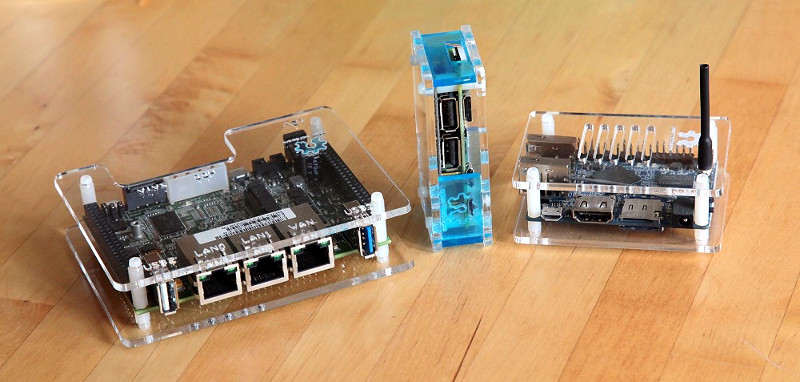Single-board computers, usually featuring ARM processors, have revolutionized the world of the hardware hacker over the last decade. The computing power you would have found in a desktop computer not so long ago, mounted on a small PCB and powered from a mobile phone charger.
With a few notable exceptions though, these single board computers are just that, boards. No cases in the pack, which has, of course, spawned a huge aftermarket of commercial offerings and a pile of homemade ones of varying sophistication. If these homemade offerings are your fancy then today’s link may be of interest, some very well-designed laser-cut cases from [Nick Smith] for a selection of popular and less well-known boards.
The Orange Pi Lite and Raspberry Pi Zero are both familiar enough, but one of the delights of writing for Hackaday reveals itself in the discovery of the more esoteric Marvell ESPRESSObin, an SBC with multiple network ports and serial ATA.
Are cases your passion? Step back in time for our round-up of case designs for the first Raspberry Pi.
Via Hacker News.
















Looks like the ESPRESSObin site got the Hackaday hug of death. Multiple gigabit network ports, SATA, USB3, and an optional pci-e wifi card looks like the makings of a decent roll-your-own router/NAS combo.
+1
OwnCloud project along with a Router.
It looks like an interesting board.
It does remind me of Pandaboard a fair bit.
And yes, you’re right, no one else remembers the pandaboard by now.
There is still one sitting in a box in my basement… I never did manage to make it do anything useful
Hopefully this turns out better than the Sheevaplug. Also hopefully the power supply is better designed. Who’s bright idea was an enclosed PSU with no venting anyway?
Commodore’s
B^)
Does anyone have a recommendation for an OpenWRT (or similar) board with ethernet, wifi, USB, and some relays (low voltage only needed, but high voltage would work)?
I’d say something common like a raspberry pi B3 and a add-on board with mosfets controlling relays with 5volt coils but mains voltage and current contactors.
But it sounds like you’re expecting a complete off-the-shelf solution.
There is an adapter board that interfaces a RPi3 with industrial grade I/O, take a look
http://www.opto22.com/site/pr_details.aspx?cid=4&item=OPTO-P1-40P
You can get plenty of “router” boards, but without the relays. (or things like raspberry pi). Or you can get relay boards with WiFi or Ethernet but using different chips, without running advanced things as opewrt.
Then there are relay boards that can be controlled via USB or serial and could work together.
espressobin listed on Amazon for $49 with prime.
You can also make cover panels from circuit board material, or rather have your circuit board fabricator do it for you. The advantage is a cover with all the necessary holes and cutouts along with appropriate silk screen labels. If you get really fancy, you can add copper either under the silkscreen or without silk screen to provide highlights and subtle details.
With circuit boards being as cheap as 5 bucks for 10, this is a very low cost solution for a case.
Be sure to include all the layers and a note saying there are no copper traces to prevent delays.
“and a note saying there are no copper traces to prevent delays”
Hmmm, just a random synapse firing in my head; print a BlueTooth or WiFi antenna on such a board?
I really love the orange pi line but the lack of nice cases vs the pi sucks.
I might just start designing some.
I prefer using regular cases and then 3D print a back panel with proper holes for connectors. I looks much better than a complete 3D printed box which also takes a huge amount of time to do.
The useful location on the climbers.net website (that I would have thought would have been linked to in the article) is for their actual box generator (with neat ‘elastic clips’):
http://climbers.net/sbc/make-laser-cut-case-elastic-clips/
..which also provides a link to a simpler box generator (capable of flat, finger or t-joint edges):
http://www.makercase.com/
There appear to be others out there to aid in the box design but those were the first two that seemed to generate results for me.